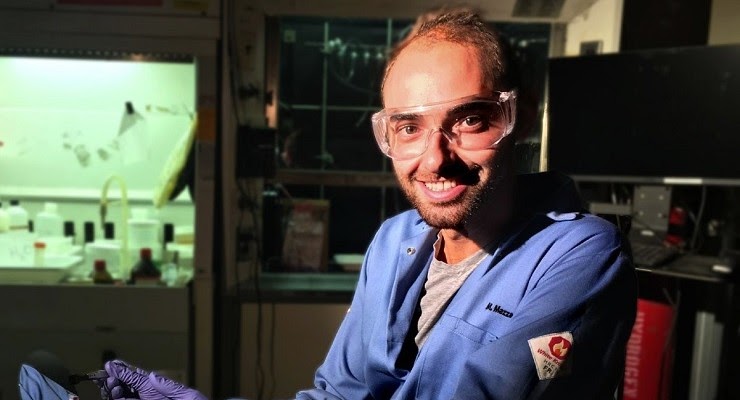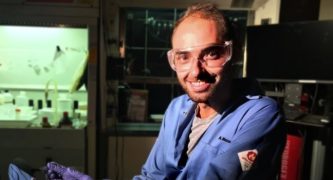
A Caltech graduate student shared his knowledge and passion for the emerging scientific field of nanostructures Friday in an online lecture exploring the potential for the cutting edge material to radically improve modern technology and building techniques.
The next big advances in chemistry and material science are being built at a scale of nanometers, or billionths of a meter, chemist Michael Mazza explained. The ultra-strong, ultra-light and highly flexible materials are composed of nanostructures. Some of the best known include carbon nanotubes and graphene.
As part of Caltech’s “Science Journey” online educational program, Mazza said he enjoys talking about the latest developments in the exciting field in an online presentation scheduled for 10 a.m. Friday, according to Caltech.
Mazza explained “how chemists and physicists around the world are harnessing the primary building block of life, carbon, to make new and interesting materials,” the institution said in a written statement.
“I really like thinking about this topic,” Mazza said. “It’s very futuristic. It’s very speculative. It’s about thinking about new materials to construct new buildings and new lightweight equipment and change the fundamental materials that go into our electronic devices.”
The primary challenge is in scaling up the new technologies from tiny lab samples to more practical amounts, he said.
“When you talk about nanostructured carbon, you’re talking about building things from the atomic scale upward, You’re tailoring the properties of these materials nearly atom by atom to accomplish a specific task,” according to Mazza. “And so when you’re looking at braided carbon nanotubes, they can be a tenth the width of a human hair, but they’ll basically be as durable as a bulletproof vest.”
Vehicles and other machines could be constructed much lighter than presently, allowing the expanded implementation of battery usage instead of combustion engines, he said.
Mazza said he enjoyed preparing the lecture.
“And I really want the people who are watching it to be filled with that kind of wonder, where we’ve really done so much work on this billionths-of-a-meter scale, this extremely small nanoscale, to develop these next materials,” he said.
“We still have some roadblocks ahead, but scientists are working day in and day out to solve them,” he added. “But people 10 years from now are going to answer questions that I don’t even know exist yet. And I want the audience to get excited about that and think about how their work or their interests or the world that they want to see can be built with this stuff.”
A recording of the lecure can be viewed online at events.caltech.edu/series/science-journeys/2020-12-11.














 0 comments
0 comments


